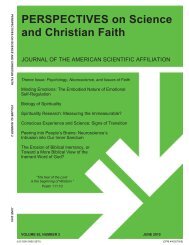In Egypt, the pyramids of kings Mer-ne-Re and Nefer-ka-Re were ...
In Egypt, the pyramids of kings Mer-ne-Re and Nefer-ka-Re were ...
In Egypt, the pyramids of kings Mer-ne-Re and Nefer-ka-Re were ...
You also want an ePaper? Increase the reach of your titles
YUMPU automatically turns print PDFs into web optimized ePapers that Google loves.
Writing in 1906, Archibald Sayce argued <strong>the</strong><br />
name Adapa should have been translated<br />
“Adamu Adamu” on <strong>the</strong> strength <strong>of</strong> <strong>the</strong> character pa<br />
which had <strong>the</strong> value <strong>of</strong> mu. mu.<br />
A principle that<br />
gover<strong>ne</strong>d <strong>the</strong> transcription <strong>of</strong> names <strong>and</strong> words<br />
was <strong>the</strong> selection <strong>of</strong> characters to express <strong>the</strong>ir<br />
sounds which also harmonized with <strong>the</strong>ir sense.<br />
The last syllable <strong>of</strong> a name like Ada-mu Ada mu was<br />
represented by an ideograph which not only had<br />
<strong>the</strong> pho<strong>ne</strong>tic value <strong>of</strong> mu, mu,<br />
but also signified<br />
“man. man.” Therefore Sayce recommended:<br />
“Henceforward, Henceforward, <strong>the</strong>refore we must transcribe <strong>the</strong><br />
name <strong>of</strong> <strong>the</strong> first man <strong>of</strong> Babylonian tradition, not<br />
A-da da-pa, pa, but A-da A da-mu. mu.”




